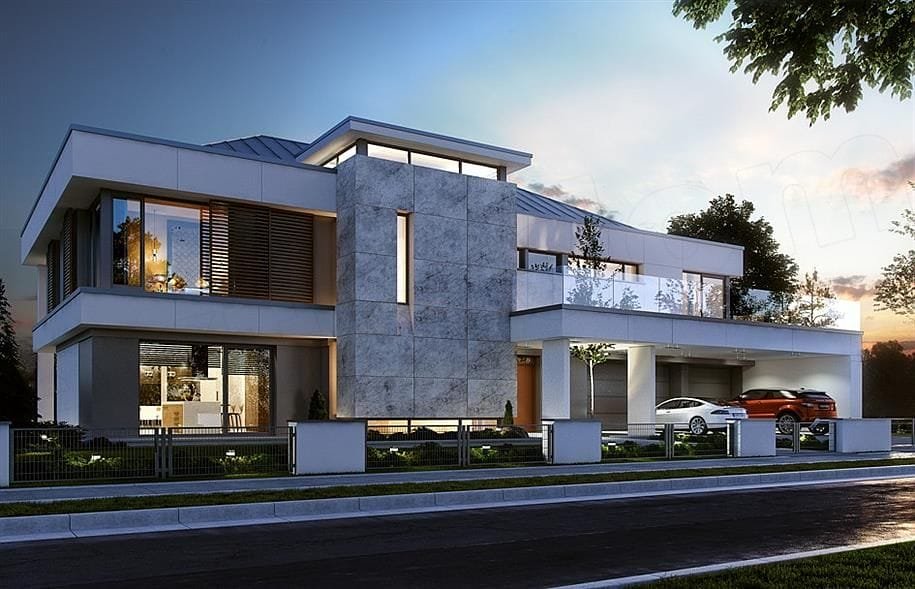Lighting in Archviz: Should You Trust Lumen or Ray Tracing?
In this article, we will discuss Lumen vs Ray Tracing to highlight the lighting factor in architectural visualization. It is the most important factor to balance the look to create realistic renderings of interior and exterior spaces. However, whatever the nature of the project is, flawless lighting is essential to capture the exact outcome. It should attract more clients and help them decide what they want for their projects.
With the help of advanced 3D architectural visualization services, you can get ultra-realistic visuals in the form of still images and animation. This way, the experienced visualizers can provide you with the best multiple lighting options by avoiding mistakes. Most of the companies, such as SMA Archviz, use Lumen and Ray tracing according to the requirements! Without any further wait, let’s discuss whether you should trust Lumen or Ray Tracing.
GET TO KNOW HOW LIGHTING IN ARCHITECTURAL VISUALIZATION HELPS IN ENHANCING THE RESULTS BY COMPARING LUMEN VS RAY TRACING!
What is Lumen?
The Lumen is a fully dynamic global light and reflection system designed for the next generation console. Lumen renders an interdisciplinary world with infinite bounce and indirect tales in a vast environment spanning scales from millimeters to kilometers. Various CG artists use advanced Lumen software to create high-quality interior designs. This software provides full dynamic lighting, other than baked lighting or static lightmaps. Plus, it can model all types of light behaviour according to the changes in geometry, material, and lighting conditions. Let’s discuss the most important features of Lumen:
- Real-time global illumination (diffuse indirect lighting)
- Dynamic reflections
- Works with virtual shadow maps
- No baking or lightmap UVs required
Well, Lumen is a mixed rendering technique that uses ray tracing software. But how does it work?
- First, it checks the depth buffer (this is called Screen Traces).
- Then, it checks the distance field to add more detail.
- Lighting is added where rays hit, using something called the Surface Cache.
- Lumen makes a low-resolution version of the scene.
- It studies how light behaves in this low-res model.
- A rough lightmap is created from this.
- That lightmap helps trace the path of each light ray.
- The final lighting is upscaled and shown as a cube map.
- Lumen does all the work in the background.
Ray Tracing
Ray Tracing is used to provide soft shadows of lights and accurate ambient occlusion (AO), interactive global illumination, reflections, and translucency by using real rays of light. It is followed by an algorithm to trace the path of light. Then it bounces off objects, goes through glass or water, and then reaches your eyes. This is one of the best ways to create life-like 3D scenarios.
However, if you want to use Ray Tracing, you must have RT cores. The more cores, are better for high performance. Now let’s compare these both advanced technologies:
Lumen vs Ray Tracing
If we talk about hardware, then Lumen has an advantage because it does not require the same amount of light calculation as ray tracing.
Moreover, Lumen provides realistic lighting, which is on point and consists of various tonal variations than Ray tracing.
Well, according to the research, Lumen is easy to use as compared to Ray Tracing. So, overall, lumen and ray tracing provide splendid results at both ends. But, at some point, Ray Tracing is better at building shadows from small and thin objects.
Visual Realism: Who Wins?
Lumen provides a great combination of speed and visual fidelity. If we talk about walkthroughs, interactive presentations, and VR experiences, then Lumen is one of the best technologies to deliver outstanding lighting results. Let’s review its strengths:
- It provides perfect dynamic lighting without waiting hours
- The diffuse bounce light is attractive
- If you want to create attractive and massive scenarios, it works super well.
Ray tracing graphics are received through high-end offline renderers or RTX-powered real-time renderers. The embedded algorithm helps in evaluating lighting behaviors, which gives results closest to real-world lighting. However, it is best for:
- Flawless lighting bounces with color bleeding.
- It provides glossy reflections from all angles of the space.
- Ray Tracing is also responsible for the best handling of light materials.
Hybrid Workflows: Why Not Use Both?
Well, what is meant by a hybrid workflow? It is a combined use of both technologies. Let us show you how studios use them both:
- Use Lumen for early-stage visualization and client presentations.
- Switch to Ray Tracing for final renders or animation that requires cinematic quality.
Unreal Engine Lumen advantages and disadvantages
- Shows lighting right away without waiting.
- Works well when things move in the scene.
- No need to create extra light files.
- Not as perfect as ray tracing for shiny or detailed surfaces.
YOU CAN CONTACT OUR COMPANY FOR THE MOST PROFESSIONAL 3D RENDERING SERVICES AND GET THE MOST REALISTIC OUTPUTS FOR YOUR INTERIOR AND EXTERIOR DESIGNS!
Final Verdict!
In short, you can trust both in lumen vs ray tracing and enhance speed and flexibility. You can go with Lumen specifically for interaction, virtual tours, and rapid prototyping. Plus, Ray Tracing can be trusted for final marketing visuals and cinematic-quality animation. However, it depends on your project requirements which one suits you best!





